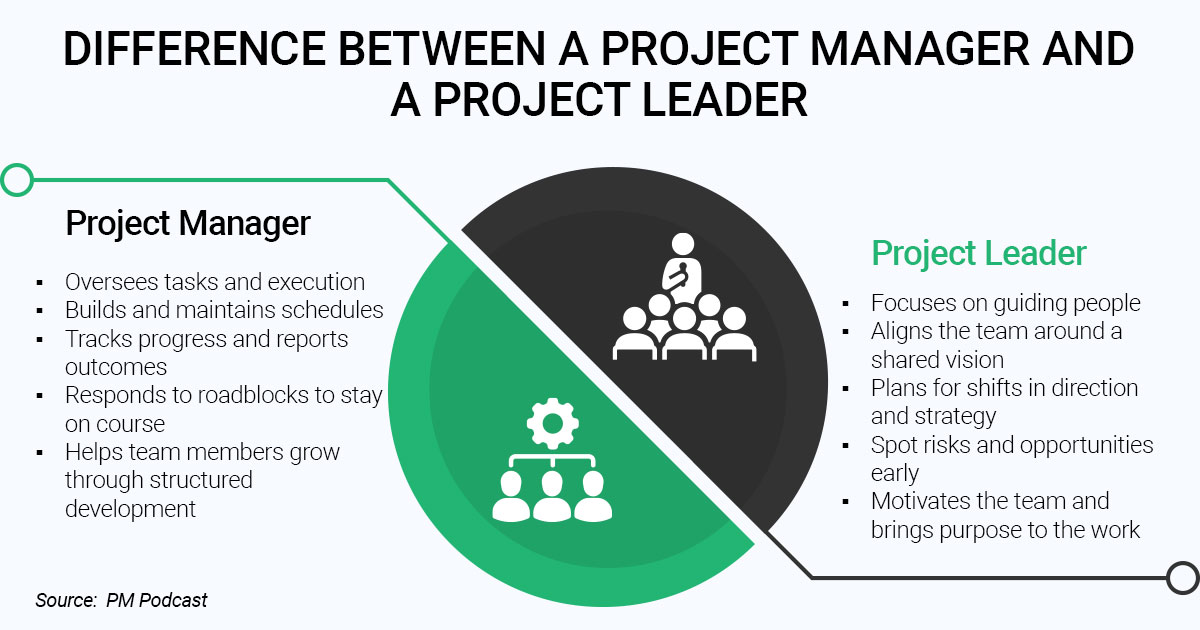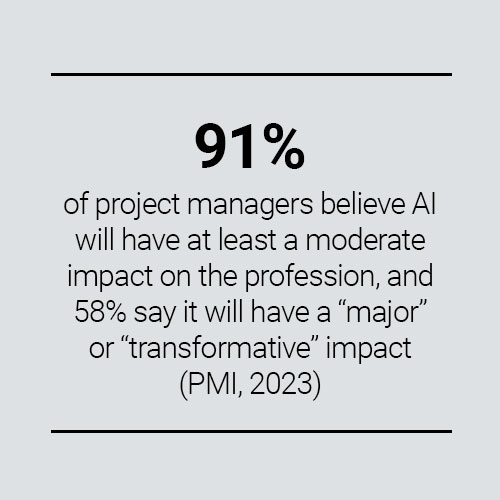
Project leadership is among the most widely explored business and personal development topics. Some actively pursue it, while others find themselves in leadership roles without seeking them. There are ongoing debates—are leaders born with the qualities, or are they shaped through experience? Leadership isn’t optional for project managers—it’s a critical part of the role.
It’s not just about managing schedules or assigning tasks. Project leadership is about inspiring action, setting the tone, and guiding the team through uncertainty with conviction.
In project management, leadership means more than hitting deadlines. It’s about creating direction, instilling purpose, and driving collaboration. Strong project leaders don't just react—they anticipate, support, and steer the team with intention. Today, many are turning to the AI-powered predictive project management solution to gain deeper foresight, reduce uncertainty, and make more confident leadership decisions.
Yet the absence of strong leadership has real consequences. 44% of workers have experienced multiple abandoned projects without explanation—a clear sign of poor planning, misaligned priorities, and lack of ownership. Teams lose trust, momentum, and clarity when leaders fail to provide direction and consistency.
Leaders who lead effectively create an environment where people work with focus, resolve challenges together, and stay aligned, even when things don’t go as planned. Their ability to lead with clarity and composure directly shapes how teams perform under pressure.
The result? A team that’s not just doing the work but is committed to delivering impact.
This blog explores why leadership matters in project management, dives into leadership styles and theories, and offers practical ways to grow as a leader.
Want to lead with confidence in every phase of your project? Discover how predictive insights and AI-powered guidance can elevate your leadership impact—every step of the way. Learn more about leading smarter with TrueProject.
Let’s begin with the foundations.
What Is Project Leadership?
Project leadership is both a mindset and a practice. It’s about guiding a team toward successful project outcomes while fostering alignment, motivation, and shared purpose. At its core, it’s the ability to unite people to accomplish more as a team than they could and enjoy the journey.
According to the Project Management Institute (PMI), project leadership is:
“The knowledge, skills, and behaviors needed to guide, motivate, and direct a team, to help an organization achieve its business goals.”
But do you need a formal title to lead a project? Not at all.
Leadership can come from any level. A project director may shape the strategic vision and engage with senior stakeholders, while a project manager ensures that day-to-day execution stays aligned with that vision. Both roles lead differently, but they aren’t the only ones.
Regardless of their title, team members can lead by influencing outcomes, supporting peers, and driving collaboration. Leadership is about action, not just authority.
Project Manager vs. Project Leader: Understanding the Difference
There’s been much discussion around management versus leadership, for good reason. The key distinction lies in focus: management centers on work, while leadership centers on people.
As a project manager, you often wear both hats. You drive project execution—managing scope, schedules, and deliverables—while leading the team, shaping morale, and building momentum. Balancing these responsibilities is what defines effective project delivery.
Understanding how these roles differ can help you refine your approach and lead more clearly. This infographic breaks down how the two compare:

Why Strong Leadership Changes Everything in a Project
Leadership is more than a role—it’s a deciding factor in whether a project meets expectations or falls short. In fact, poor project leadership has been cited as a key reason behind failed initiatives. On the other hand, projects with active leadership and executive involvement consistently perform better.
Here’s what effective leadership brings to the table:
- Momentum That Doesn’t Stall: When decisions aren’t delayed, progress is steady. A hands-on project leader clears roadblocks, provides direction, and keeps the team moving—without wasting time in limbo. The result? Projects stay on track and deliver as promised.
- Clarity That Drives Every Action: Leadership brings focus. When the entire team understands what they're working toward, decisions are faster, priorities are sharper, and alignment feels natural. Clear direction becomes the lens through which every task is measured.
- Friction Doesn’t Spiral: Disagreements are inevitable, but good leaders spot tension early. They step in with empathy, resolve issues quickly, and create a space where differences don’t derail progress—they drive better outcomes.
 Today, project success also depends on how well leaders use modern technology, such as artificial intelligence-powered solutions. Predictive project management solutions now play a vital role in leadership. These systems offer early warning signs, real-time feedback, and insights that help leaders course-correct before small issues turn into big problems. It’s not just about leading well—it’s about leading smarter.
Today, project success also depends on how well leaders use modern technology, such as artificial intelligence-powered solutions. Predictive project management solutions now play a vital role in leadership. These systems offer early warning signs, real-time feedback, and insights that help leaders course-correct before small issues turn into big problems. It’s not just about leading well—it’s about leading smarter.
The bottom line? Good leadership fuels performance. And when paired with modern project intelligence tools, it creates a powerful combination that increases project value across the board. Let’s take a deeper look at the modern trends in project leadership styles.
Adapting Project Leadership Styles to Modern Trends
Project leadership today is no longer defined by traditional office settings or rigid methods. With evolving technologies, distributed teams, and the pace of change accelerating, project managers must reshape how they lead. The most effective leaders adapt, not just to keep up, but to drive progress.
Turning Change into Opportunity
Project leaders who thrive in this environment don’t resist change—they lead through it. Transformational leaders, in particular, view shifts in technology and team dynamics as openings for innovation, not disruption.
Here’s how leadership is evolving to meet the demands of modern project management: 
Leading in the Age of AI: The artificial intelligence-powered project management solution is transforming how decisions are made. From analyzing risks to streamlining communication, AI empowers leaders to make smarter, faster choices grounded in data. It doesn’t replace leadership—it sharpens it.
Using Solution as Strategic Extension: The predictive project management solution today goes beyond task tracking. With features like interactive dashboards, predictive insights, and intelligent resource planning, these platforms become part of a leader’s strategic toolkit, helping teams collaborate, adapt, and move in sync.
Rethinking Remote Leadership: The rise of remote work has changed how leaders connect. Influence is built through clarity, trust, and results, not physical presence. Successful project leadership is to lead by aligning expectations, facilitating digital connection, and creating accountability across time zones.
Embracing Hybrid Methodologies: Strict adherence to a single methodology gives way to a flexible, hybrid approach. The blend of Agile adaptability and Waterfall structure allows leaders to respond to complexity confidently, shaping workflows that work best for the team and the project.
Leading with Emotional Awareness: Emotional intelligence is no longer optional. Project leaders who read the room—virtual or not—resolve conflict faster, strengthen team bonds, and inspire action. Dr. Travis Bradberry observed that emotional intelligence is “the strongest predictor of performance.”
Watch the demo now and discover how TrueProject equips today’s leaders to lead with clarity, agility, and confidence—no matter the pace or complexity.
Project Leadership Styles That Shape Success
Project leaders often wear different hats depending on the project's complexity, team dynamics, and organizational culture. Choosing the right project leadership approach can significantly impact how smoothly a project runs—and how well the team performs.
Here are a few widely used styles that continue to make a difference:
- Servant Leadership: Prioritizes the team’s needs above all. This approach builds trust and encourages deeper engagement by focusing on support, not control.
- Transformational Leadership: Drives teams to exceed expectations. By inspiring growth and creativity, this style fosters innovation and helps individuals realize their potential.
- Situational Leadership: Adjusts based on the team’s strengths and the project’s demands. Leaders shift their approach depending on who they’re working with and what the situation calls for.
- Transactional Leadership: Focuses on structure and performance. Clear goals, measurable rewards, and accountability are at the heart of this style, keeping teams aligned on delivery.
The New Blueprint for Project Leadership
Strong leadership sets the pace for project success. With distinct leadership styles, knowing when and how to apply each can make all the difference in dynamic environments.
 Modern project management demands flexibility. Project leaders who adapt to current trends can better lead teams with clarity and impact. Here’s how today’s landscape is redefining leadership:
Modern project management demands flexibility. Project leaders who adapt to current trends can better lead teams with clarity and impact. Here’s how today’s landscape is redefining leadership:
- AI strengthens decision-making with deeper insights and faster risk response.
- The predictive project management solution supports real-time collaboration, keeping everyone aligned and informed.
- Remote models prioritize outcomes, supported by digital-first communication.
- Emotional intelligence drives engagement, turning conflict into progress and inspiring teams to stay motivated.
Project leaders who recognize and shift between transformational approaches are more equipped to deliver consistent results. Aligning project leadership with technological progress not only improves execution but also fosters a culture rooted in growth, innovation, and continuous improvement.
The Summary
It’s easy to underestimate the role of leadership when projects are moving fast, deadlines loom, and checklists dominate the day. But when teams become more distributed, timelines are tighter, and technology is more advanced, the pressure to lead with purpose is non-negotiable. This isn’t about managing tasks—it’s about setting direction, anticipating change, and building a culture that thrives under uncertainty.
The leaders who rise to this challenge—those who lead with insight, emotional clarity, and the power of predictive intelligence—are the ones shaping the future of project success. That’s where TrueProject comes in. TrueProject, KPI-based predictive project management SaaS solution that improves project health and performance, amplifies leadership by offering AI-driven insights that predict potential project issues before they escalate. By integrating real-time data with stakeholder feedback, TrueProject provides a comprehensive view of project health, enabling leaders to make informed decisions and keep teams aligned.
It takes the guesswork out of your project leadership—so you can focus on driving real results. Because in the end, it’s not just about getting to the finish line. It’s about leading a team that believes in the journey, owns the outcome, and delivers impact that lasts.
Ready to lead with precision, purpose, and predictive power? See how TrueProject transforms leadership into measurable impact. Make smarter decisions, inspire stronger teams, and ensure every project moves forward with clarity.





